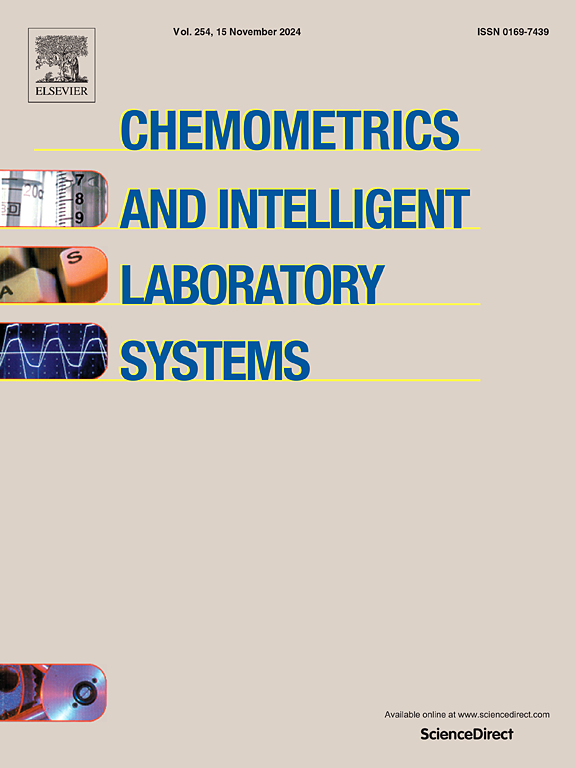利用分子对接和ADME预测,利用基于ai的多阶段系统方法发现新的抗hiv候选分子
IF 3.8
2区 化学
Q2 AUTOMATION & CONTROL SYSTEMS
Chemometrics and Intelligent Laboratory Systems
Pub Date : 2025-10-08
DOI:10.1016/j.chemolab.2025.105543
引用次数: 0
摘要
由于人类免疫缺陷病毒(HIV)的持续全球影响,发现新的治疗分子仍然是一个关键的研究重点。传统的药物发现过程往往耗时、昂贵,而且在早期阶段的预测能力有限。在这项研究中,我们提出了一个三阶段的人工智能支持框架,该框架集成了深度学习和分子对接,以加速候选物的识别。首先,采用自定义的自编码器-长短期记忆(LSTM)模型生成符合关键药代动力学规则的新分子结构。其次,设计了几何深度学习(GDL)模型来评估与主要HIV-1靶点的相互作用,包括整合酶、蛋白酶和逆转录酶。最后,在硅对接模拟评估结合亲和力和抑制常数。该框架生成的分子不仅符合药代动力学和药物相似性标准(例如QED, ADME, SAScore),而且还显示出良好的结合特性,特别是针对HIV-1逆转录酶。这些发现突出了所提出的方法在补充早期药物发现方面的潜力,并有助于设计有前途的先导化合物以进行进一步的实验验证。本文章由计算机程序翻译,如有差异,请以英文原文为准。
Discovery of new anti-HIV candidate molecules with an AI-based multi-stage system approach using molecular docking and ADME predictions
The discovery of novel therapeutic molecules against the Human Immunodeficiency Virus (HIV) remains a critical research priority due to the persistent global impact of the disease. Traditional drug discovery processes are often time-consuming, costly, and limited in predictive capacity at early stages. In this study, we propose a three-stage AI-supported framework that integrates deep learning and molecular docking to accelerate candidate identification. First, a customized Autoencoder–Long Short-Term Memory (LSTM) model was employed to generate novel molecular structures consistent with key pharmacokinetic rules. Second, a Geometric Deep Learning (GDL) model was designed to evaluate interactions with major HIV-1 targets, including integrase, protease, and reverse transcriptase. Finally, In silico docking simulations assessed binding affinities and inhibition constants. The framework generated molecules that not only complied with pharmacokinetic and drug-likeness criteria (e.g., QED, ADME, SAScore) but also demonstrated favorable binding properties, particularly towards HIV-1 reverse transcriptase. These findings highlight the potential of the proposed approach to complement early-stage drug discovery and to contribute to the design of promising lead compounds for further experimental validation.
求助全文
通过发布文献求助,成功后即可免费获取论文全文。
去求助
来源期刊
CiteScore
7.50
自引率
7.70%
发文量
169
审稿时长
3.4 months
期刊介绍:
Chemometrics and Intelligent Laboratory Systems publishes original research papers, short communications, reviews, tutorials and Original Software Publications reporting on development of novel statistical, mathematical, or computer techniques in Chemistry and related disciplines.
Chemometrics is the chemical discipline that uses mathematical and statistical methods to design or select optimal procedures and experiments, and to provide maximum chemical information by analysing chemical data.
The journal deals with the following topics:
1) Development of new statistical, mathematical and chemometrical methods for Chemistry and related fields (Environmental Chemistry, Biochemistry, Toxicology, System Biology, -Omics, etc.)
2) Novel applications of chemometrics to all branches of Chemistry and related fields (typical domains of interest are: process data analysis, experimental design, data mining, signal processing, supervised modelling, decision making, robust statistics, mixture analysis, multivariate calibration etc.) Routine applications of established chemometrical techniques will not be considered.
3) Development of new software that provides novel tools or truly advances the use of chemometrical methods.
4) Well characterized data sets to test performance for the new methods and software.
The journal complies with International Committee of Medical Journal Editors'' Uniform requirements for manuscripts.

 求助内容:
求助内容: 应助结果提醒方式:
应助结果提醒方式:


